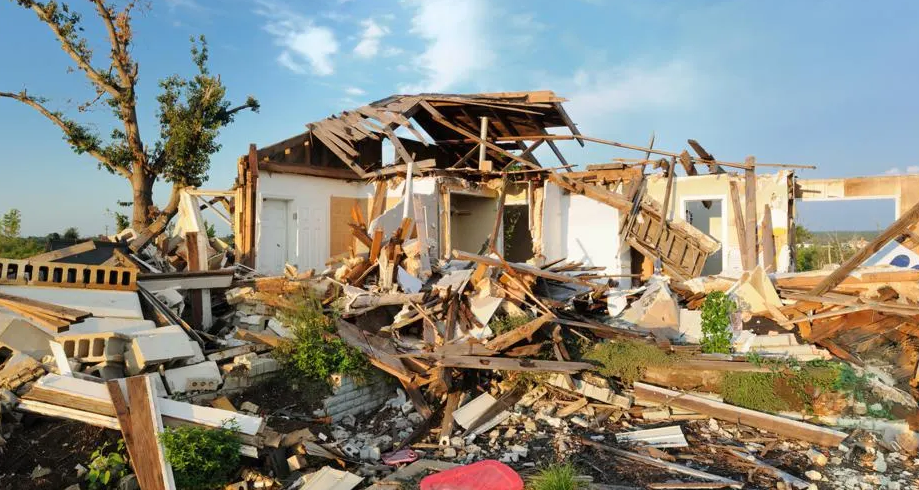Home insurance is essential for homeowners, providing financial protection in the event of disasters, accidents, or unexpected events that damage or destroy your home. With so many insurance companies offering a variety of policies, comparing home insurance can be a challenging task. The right policy will protect your home and belongings while fitting within your budget.
In this article, we will guide you through the process of comparing home insurance policies to help you find the best deal that meets your needs.
1. Understand What You Need in Home Insurance
Before you start comparing different home insurance policies, it’s essential to understand the specific coverage you need. Home insurance can vary greatly depending on the type of property, location, and personal preferences. Begin by evaluating your needs to determine the type and amount of coverage you should have.
Here are the key areas to consider:
- Dwelling Coverage: This covers the structure of your home, including walls, roof, and foundation, against risks like fire, storms, vandalism, and theft.
- Personal Property Coverage: This provides protection for your belongings, such as furniture, electronics, and clothing, if they are damaged or stolen.
- Liability Coverage: This helps protect you if someone is injured on your property or if you are responsible for causing damage to someone else’s property.
- Additional Living Expenses (ALE): This covers the cost of living elsewhere if your home becomes uninhabitable due to a covered event, such as a fire or storm.
- Flood and Earthquake Coverage: These are separate policies that you may need to purchase in addition to standard home insurance if you live in high-risk areas.
Once you understand what coverage you need, you can focus on finding policies that align with your requirements.
2. Gather Quotes from Multiple Insurance Companies
The next step in comparing home insurance policies is to gather quotes from multiple insurance providers. Each insurer offers different pricing structures, so obtaining multiple quotes will give you a better sense of what’s available. Most insurance companies offer free online quotes, allowing you to compare prices conveniently from the comfort of your home.
To get accurate quotes, you’ll need to provide the same information to each insurer. This typically includes details about:
- The size, age, and condition of your home
- The location of your property
- The value of your personal belongings
- Any safety features in your home, such as fire alarms, security systems, or deadbolt locks
- Your claims history
Once you’ve gathered quotes, take note of the coverage amounts, deductibles, premiums, and any additional costs or discounts that may apply.
3. Compare Coverage Limits and Deductibles
When comparing home insurance policies, it’s important to focus not only on the premium costs but also on the coverage limits and deductibles. These factors determine the extent of protection your policy offers and how much you will pay out of pocket if you need to file a claim.
- Coverage Limits: This refers to the maximum amount your insurance company will pay for a covered event. For example, if your home is damaged in a fire, the coverage limit for dwelling insurance will determine how much the insurer will pay to rebuild your home. Make sure that the coverage limits are adequate for the cost of rebuilding your home and replacing your personal belongings. It’s a good idea to have your home appraised to ensure the coverage limit is sufficient.
- Deductibles: A deductible is the amount you must pay out of pocket before your insurance policy will pay for a claim. A higher deductible typically results in lower premiums, but it also means you will have to pay more in the event of a claim. On the other hand, a lower deductible can lead to higher premiums but less out-of-pocket expense if something happens. Consider your budget and your ability to cover the deductible when making this decision.
When comparing policies, be sure to evaluate the balance between coverage limits and deductibles. A policy with a low premium may seem appealing, but if the coverage limits are too low or the deductible is too high, it may not offer the protection you need.
4. Review the Policy Exclusions
Every home insurance policy comes with exclusions—certain situations and events that are not covered. These exclusions can vary widely between providers and policies, so it’s essential to read the fine print and understand what’s excluded.
Common exclusions in home insurance policies include:
- Floods: As mentioned earlier, floods are generally not covered under standard home insurance. You may need to purchase a separate flood insurance policy.
- Earthquakes: Similarly, earthquake coverage is often excluded and requires a separate policy.
- Maintenance Issues: Most home insurance policies don’t cover damages caused by poor maintenance, such as worn-out roofs or plumbing issues.
- High-value items: Some policies have limits on the amount of coverage for expensive items such as jewelry, art, and collectibles. You may need to purchase additional coverage for these items.
Take note of the exclusions in each policy you’re considering. If a particular exclusion could potentially leave you unprotected in the event of a disaster, you might want to look for an insurer that provides coverage for that scenario, either as part of the standard policy or as an optional add-on.
5. Consider Discounts and Savings Opportunities
Many home insurance companies offer discounts that can help reduce your premium costs. When comparing policies, be sure to inquire about any available discounts. These can make a significant difference in your overall costs.
Common discounts include:
- Bundling: Many insurance companies offer discounts if you bundle multiple policies, such as home and auto insurance, with the same provider.
- Safety Features: Discounts may be available for homes equipped with safety devices, such as smoke detectors, burglar alarms, deadbolt locks, or sprinkler systems.
- Claims-Free History: Some insurers offer discounts to homeowners who have not filed any claims in recent years.
- Loyalty Discounts: If you’ve been with an insurance company for a long time, you may be eligible for a loyalty discount.
- New Homeowner Discounts: If you’ve recently purchased a new home, some insurers offer discounts for first-time homeowners or for homes that meet certain construction standards.
Make sure to ask each insurance provider about the discounts they offer and consider how these discounts will impact your premiums.
6. Check the Insurance Company’s Reputation and Customer Service
Price and coverage are essential factors, but the reputation of the insurance company is equally important. You want to ensure that the insurer you choose has a strong track record of customer satisfaction and handling claims efficiently. A company with poor customer service or a history of denying claims can leave you frustrated when you need help the most.
Look for customer reviews and ratings from reputable sources, such as the Better Business Bureau (BBB) and J.D. Power. Additionally, check financial stability ratings from agencies like A.M. Best or Moody’s to ensure the insurer has the financial resources to pay claims if necessary.
Take the time to research the insurance company’s customer service reputation, claims handling process, and overall reliability.
7. Review the Policy’s Terms and Conditions
Once you’ve narrowed down your options, carefully review the policy terms and conditions. Look for any fine print or clauses that may impact your coverage or premiums. Pay attention to the following:
- Payment options: Some policies may offer flexible payment plans, allowing you to pay monthly, quarterly, or annually. Check if the payment schedule works with your budget.
- Renewal policies: Understand how your premium may change when it’s time to renew your policy. Some insurers may increase premiums at renewal time, so knowing what to expect can help you plan ahead.
- Policy cancellation terms: Review the terms of cancellation to ensure you can make changes to your policy or switch insurers if necessary.
8. Make an Informed Decision
After reviewing all the policies, quotes, and terms, you’re ready to make an informed decision. Choose the policy that offers the best combination of coverage, premium, customer service, and value for your specific needs. Don’t just choose the cheapest option—focus on finding a policy that will provide comprehensive protection and peace of mind in case of an emergency.
Conclusion
Comparing home insurance policies is a critical step in protecting your home, your belongings, and your financial well-being. By understanding your coverage needs, gathering quotes from multiple insurers, comparing policy terms, and considering factors like discounts and exclusions, you can find the best home insurance policy for your unique situation.
Remember to regularly review your home insurance policy to ensure it continues to meet your needs as your circumstances change, whether that’s through a new home purchase, home improvements, or changes in the family. With the right coverage in place, you can rest easy knowing that your home and personal belongings are protected.

